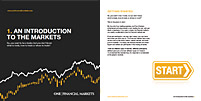

USDJPY hits 1990 highs as yen weakens; Intervention in focus
Investing.com-- The Japanese yen weakened on Wednesday amid persistent pressure from a strong dollar and relatively dovish outlook for the Bank of Japan, with the USDJPY pair hitting its highest level in nearly 34 years.
The yen’s weakness put the prospect of government intervention in currency markets squarely in focus, especially following comments from top government officials that recent weakness in the currency was “speculative.”
USDJPY rose 0.2% to 151.97- its highest level since mid-1990. These levels were last seen during the unwinding of a massive speculative bubble in Japan and the onset of the country’s “lost decade.”
Weakness in the yen came even as the Bank of Japan hiked interest rates for the first time in 17 years last week. But comments from Governor Kazuo Ueda, coupled with a continuation of the BOJ’s bond purchases, suggested that monetary conditions will remain largely loose in the near-term.
Strength in the dollar- especially following dovish signals from the Swiss National Bank and the Bank of England- also pressured the yen, as traders saw the greenback as the only high-yielding, low-risk currency, at least until the Federal Reserve begins trimming interest rates.
USDJPY intervention in focus after government warning
The yen weakened even as top government officials warned that they would not rule out any measures to stem the Japanese currency’s decline. Masato Kanda, the vice finance minister for international affairs, and a key figure in the government’s currency market moves, warned earlier this week that the yen’s weakness did not reflect fundamentals, and that he stood ready to respond appropriately to weakness in the currency.
Kanda had spearheaded record levels of government intervention in currency markets through late-2022, when the USDJPY pair had last tested its 1990 highs. Government dollar selling had sparked a sharp decline in the pair, the threat of which kept yen short sellers on their toes.
Analysts have argued that relatively high U.S. rates remain the biggest driver of yen depreciation, and that the currency was only due for relief after the Fed began trimming interest rates.
Japanese inflation- a key driver of BOJ monetary policy- has seen some stickiness in recent months. But analyst also said it will take more stubborness in inflation for the BOJ to consider increasing interest rates further, and that more increases will likely be gradual.
Focus this week is on Tokyo consumer price index inflation, due Friday, for more cues on price pressures in the country.
Begin trading today! Create an account by completing our form
Privacy Notice
At One Financial Markets we are committed to safeguarding your privacy.
Please see our Privacy Policy for details about what information is collected from you and why it is collected. We do not sell your information or use it other than as described in the Policy.
Please note that it is in our legitimate business interest to send you certain marketing emails from time to time. However, if you would prefer not to receive these you can opt-out by ticking the box below.
Alternatively, you can use the unsubscribe link at the bottom of the Demo account confirmation email or any subsequent emails we send.
By completing the form and downloading the platform you agree with the use of your personal information as detailed in the Policy.






